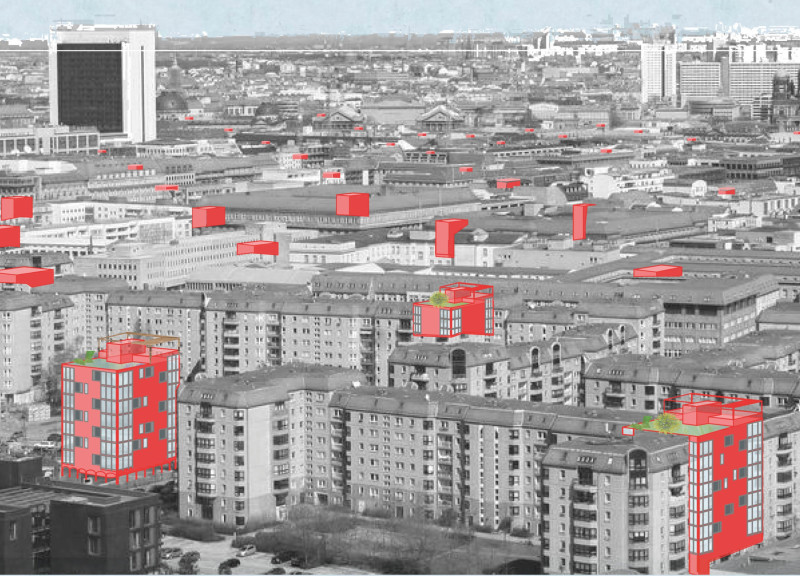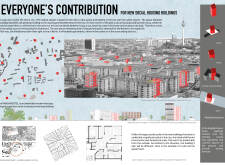5 key facts about this project
The essence of the project lies in its innovative approach to the distribution and construction of housing units. It embraces a grid system that allows residents to engage directly in the housing process, giving them the autonomy to claim and design space according to their needs. This participatory strategy transforms the typical notion of housing from a fixed product to a flexible process, actively involving the community in shaping their living environment. Such engagement enhances ownership and pride among residents, which is essential for the success of any social housing initiative.
Functionality is a critical aspect of the design, as the project seeks to balance both private and communal spaces effectively. The architectural plans indicate a variety of housing units, accommodating different family sizes and living arrangements. This diversity is essential in addressing the varying requirements of the urban populace and fostering inclusivity. The design prioritizes natural light and ventilation, integrating large glazed elements that connect indoor living spaces with the outdoor environment, thus enhancing the occupants' quality of life.
Key components of the design include adaptable floor plans and communal spaces, with the latter strategically located to promote interaction among residents. Rooftop gardens serve as pivotal gathering spots, offering not only a communal area for socializing but also providing residents with access to green space in an urban setting. These thoughtful inclusions reflect an awareness of the importance of shared experiences in building a strong community fabric.
Materiality within the project is another notable feature that contributes to its overall ethos. The architects have opted for a blend of concrete, glass, wood, and steel, each chosen for their specific qualities and functions. Concrete provides structural durability, while glass elements create transparency and a sense of openness. Wood introduces a warmer aesthetic, contributing to comfort and connection, and steel is used for its strength and modern visual appeal. This material palette aligns with the project’s sustainability goals, as each component plays a role in enhancing the building’s overall environmental performance.
The project’s geographical context in Hansaviertel influences its design language, illustrating respect for the area's historical significance while injecting a contemporary dialogue into the urban landscape. The architects have taken care to relate the new developments to the existing fabric, ensuring harmony with the neighborhood's architecture and open spaces.
Unique design approaches emerge from this interplay between architecture and community. The project does not merely aim to create new housing but seeks to redefine how residents engage with their living spaces and each other. By encouraging a sense of shared responsibility in the housing process, this initiative stands as a model for future social housing projects, demonstrating the potential of architecture to facilitate community-building in an urban environment.
Readers interested in exploring the finer details of this project are encouraged to delve into the architectural plans, sections, and various design elements presented. Engaging with these components will offer a more nuanced understanding of the architectural ideas that underpin "Everyone’s Contribution" and its aspirations to reshape social housing in Berlin.























